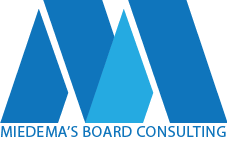The speed and damage of a #MeToo accusation can strike fear in a board member’s mind. It is almost a daily occurrence that there is an accusation that takes down a leader and leaves an organization in turmoil. Here are some preventative #MeToo lessons for nonprofit boards:
1. Have a Whistleblower Policy That is Reported to the Board
Up until now a Whistleblower Policy has only been expected of large nonprofits but it can be a helpful mechanism for nonprofits of any size. The policy itself is usually written by management but the board should make sure it is in place and that the board or a board committee is made aware of every complaint and the action that is taken. Whistleblower hotlines are often used by staff for complaints that are not in the categories of “unethical, illegal or fraudulent” but it is still a good practice for the board to at least be aware of the kind of things staff are complaining about.
2. Have a Crisis Management Plan
It does not take long to craft a few basic actions to take in the event of a crisis, regardless of the nature of the crisis. Think of it like a fire drill. It helps to know where to go and what to do when you don’t have time to think. The Board Policy Manual should state clearly who can and cannot speak with the media. Then give the authorized people some basic training or instructions so they know how to react. Ensure also that the plan includes communication mechanisms so the staff and key stakeholders are kept up to date and that staff are well cared for during the crisis.
3. Have an Emergency Succession Plan
A board can never prepare for every possible situation but having an Emergency Succession Plan can help them hit the ground running if the Executive Director is suddenly not available. The Emergency Succession Plan includes the name of the temporary successor, a job description, essential tasks, current role expectations and an inventory of key contacts and files. To take it a step further, have succession plans in place for other key roles as well especially if senior staff are related because it increases the probability of a shared absence.
4. Survey Staff
The board should see staff surveys that test for cultural elements such as trust, respect for leadership and the effectiveness of policies such as the organization’s anti-harassment policy. This might not be practical or useful in a very small organization where it is difficult for staff to make anonymous comments but it is worth investigating whether there are creative ways of testing for these things without the board itself creating a culture of mistrust.
5. Arrange for a Periodic External Review of the Executive Director
Every few years it can be helpful for the board to arrange for an external review of the Executive Director as part of his/her annual performance review. These reviews involve hiring a trusted and competent external consultant to conduct surveys or interview staff, partners, donors and other stakeholders. The results can affirm or enlighten a board’s assessment of the Executive Director’s performance and can provide valuable coaching advice for the board in managing the Executive Director.
6. Take a Close Look at the Risk Management Plan
While management typically develops the Risk Management Plan and reports mitigation efforts to the board, the board plays a key role in using their external perspective to determine whether there are biases or risks that are missing.
7. Have a Great Board Policy Manual
I admit to a bias but so many of these issues could be avoided with a great Board Policy Manual. It can’t take the risk of a crisis away entirely but it can put preventative policies in place and give a board confidence and a plan for times of crisis.







